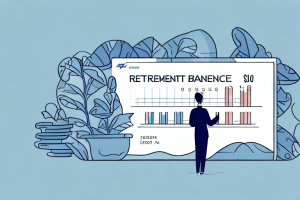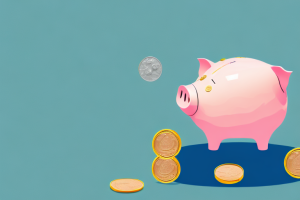The benefits of early retirement
Retiring at 35 with $5 million dollars may seem like a dream come true for many people. But is it really possible? In this article, we will explore the various factors that come into play when considering early retirement and whether it is feasible to achieve this financial milestone.
One of the main benefits of early retirement is the freedom it provides. By retiring at a younger age, individuals have more time to pursue their passions and interests. They can travel, start a new business, or engage in volunteer work without the constraints of a full-time job. This freedom allows for a more fulfilling and meaningful retirement experience.
Another advantage of early retirement is the potential for better health outcomes. Stress and burnout are common in the workplace, and retiring early can help alleviate these issues. With more time to focus on self-care and a less hectic lifestyle, individuals may experience improved physical and mental well-being. Early retirees often have the opportunity to prioritize exercise, healthy eating, and relaxation, leading to a higher quality of life in their retirement years.
How to save and invest for early retirement
When it comes to early retirement, saving and investing become crucial. It’s important to have a disciplined approach towards saving and to make wise investment choices to grow your wealth over time. By making smart financial decisions and putting in the effort, you can increase the likelihood of achieving your early retirement goals.
One important aspect of saving for early retirement is creating a budget and sticking to it. This involves tracking your expenses and identifying areas where you can cut back and save more. By creating a realistic budget and being mindful of your spending habits, you can free up more money to put towards your retirement savings.
In addition to saving, investing is another key component of building wealth for early retirement. It’s important to diversify your investment portfolio to minimize risk and maximize potential returns. This can include investing in stocks, bonds, real estate, and other assets. Consulting with a financial advisor can help you make informed investment decisions based on your risk tolerance and financial goals.
The power of compound interest in achieving early retirement
One of the key elements in building wealth for early retirement is the power of compound interest. By starting to save and invest early, you give your money more time to grow. Over time, the compounding effect can result in significant wealth accumulation, allowing you to retire at a younger age with a substantial nest egg.
Compound interest works by earning interest not only on the initial amount of money you invest, but also on the accumulated interest over time. This means that as your investment grows, the amount of interest earned also increases. The longer you leave your money invested, the more time it has to compound and grow exponentially.
Strategies for maximizing your investment returns
When it comes to investing for early retirement, it’s essential to adopt strategies that maximize your investment returns. Diversification, asset allocation, and regular review of your portfolio are some of the tactics that can help optimize your investments and increase your chances of achieving your goal of retiring at 35 with $5 million dollars.
In addition to these strategies, another important tactic for maximizing your investment returns is to take advantage of tax-efficient investment vehicles. By investing in tax-advantaged accounts such as individual retirement accounts (IRAs) or 401(k) plans, you can potentially reduce your tax liability and keep more of your investment gains. These accounts offer tax benefits such as tax-deferred growth or tax-free withdrawals, allowing your investments to compound over time without being hindered by taxes.
Building a diversified investment portfolio for long-term growth
A well-diversified investment portfolio is a key component of any retirement plan, especially if you are aiming for early retirement. By spreading your investments across various asset classes, you reduce the risk of losses impacting your overall portfolio. This diversification strategy can help you achieve long-term growth and secure your financial future.
One important aspect of building a diversified investment portfolio is considering the different types of assets you can invest in. These can include stocks, bonds, real estate, commodities, and even alternative investments such as cryptocurrencies or private equity. Each asset class has its own risk and return characteristics, so by investing in a mix of these assets, you can potentially benefit from different market conditions and reduce the impact of any single investment’s performance on your overall portfolio.
Another factor to consider when diversifying your portfolio is geographic diversification. Investing in different regions and countries can help mitigate the risk of being overly exposed to a single market or economy. By spreading your investments globally, you can take advantage of opportunities in different regions and potentially benefit from economic growth in various parts of the world.
The importance of starting to save early for retirement
Time is an essential element when it comes to saving for early retirement. The earlier you start saving, the more time you have to accumulate wealth and benefit from compounding. Starting early allows you to take advantage of the power of time, enabling you to retire at 35 with $5 million dollars.
Furthermore, starting to save early for retirement also provides you with a greater sense of financial security. By building a substantial retirement fund over time, you can ensure that you have enough money to support yourself and your desired lifestyle during your golden years. This financial security allows you to enjoy your retirement without constantly worrying about money or relying on others for financial assistance.
Exploring different retirement savings options and their potential returns
There are various retirement savings options available, such as employer-sponsored 401(k) plans, individual retirement accounts (IRAs), and taxable investment accounts. It is important to explore these options and understand their potential returns and associated risks. By choosing the right savings vehicles, you can maximize your chances of achieving your financial goals.
One popular retirement savings option is the employer-sponsored 401(k) plan. This type of plan allows employees to contribute a portion of their salary to a retirement account, often with the added benefit of employer matching contributions. The potential returns of a 401(k) plan can vary depending on the investment options available within the plan and the performance of those investments over time.
Calculating how much you need to save to retire at 35 with $5 million dollars
Retiring at 35 with $5 million dollars requires careful financial planning and calculating the amount of money you need to save. Factors such as your desired retirement lifestyle, inflation, and investment returns need to be taken into account. By using retirement calculators and working with financial advisors, you can determine the appropriate savings rate and investment strategy to reach your goal.
It is important to note that retiring at 35 with $5 million dollars may require significant sacrifices and disciplined saving habits. Depending on your current income and expenses, you may need to cut back on discretionary spending and prioritize saving for retirement. Additionally, it is crucial to regularly review and adjust your savings plan as your financial situation and goals evolve over time. By staying committed to your savings goals and making informed financial decisions, you can increase your chances of achieving early retirement with a substantial nest egg.
Tips for reducing expenses and increasing savings towards early retirement
Reducing expenses and increasing savings are critical steps towards early retirement. By adopting frugal living habits, cutting unnecessary expenses, and prioritizing saving, you can accelerate your journey to financial independence. It’s essential to be mindful of your spending and make choices that align with your long-term retirement goals.
One effective way to reduce expenses is to create a budget and track your spending. By analyzing your monthly expenses, you can identify areas where you can cut back and save money. Consider eliminating non-essential subscriptions, reducing dining out expenses, and finding more cost-effective alternatives for everyday items.
In addition to cutting expenses, increasing your savings is equally important. Set a specific savings goal and create a plan to achieve it. Consider automating your savings by setting up automatic transfers from your checking account to a dedicated savings account. This way, you can consistently save a portion of your income without having to think about it.
Balancing risk and reward in your investment strategy
Investing involves taking risks, and it’s important to find the right balance between risk and reward. While aggressive investments can potentially yield higher returns, they also come with increased volatility. A conservative approach may provide stability but may not generate sufficient returns. Finding the optimal risk-reward balance based on your risk tolerance and financial goals is key to achieving early retirement.
One way to balance risk and reward in your investment strategy is to diversify your portfolio. By spreading your investments across different asset classes, industries, and geographic regions, you can reduce the impact of any single investment’s performance on your overall portfolio. Diversification can help mitigate risk and potentially increase your chances of achieving consistent returns.
Another factor to consider when balancing risk and reward is your investment time horizon. Generally, the longer your time horizon, the more risk you can afford to take. This is because you have more time to recover from any short-term market fluctuations. However, if you have a shorter time horizon, such as nearing retirement, it may be prudent to reduce your exposure to riskier investments and focus on preserving capital.
The role of passive income in achieving financial independence at 35
Passive income streams can significantly contribute to financial independence and early retirement. Rental properties, dividend-paying stocks, and online businesses are examples of passive income sources that can support your lifestyle expenses without needing to rely solely on your savings. Creating multiple passive income streams can provide added security and flexibility during early retirement.
Managing and minimizing taxes on your investment income in retirement
Taxes can have a significant impact on your investment income during retirement. Implementing tax-efficient strategies such as tax-deferred retirement accounts, capital gains harvesting, and managing the timing of withdrawals can help reduce your tax liability and maximize your after-tax returns. It’s essential to plan ahead and consult with tax professionals to optimize your tax situation during early retirement.
Preparing for unexpected expenses during early retirement
Life is unpredictable, and it’s crucial to be prepared for unexpected expenses during early retirement. Having an emergency fund, adequate insurance coverage, and a contingency plan can help you navigate any unforeseen circumstances and avoid financial setbacks. By building a robust financial safety net, you can ensure a smoother journey towards early retirement.
Strategies for maintaining a comfortable lifestyle throughout retirement
Maintaining a comfortable lifestyle throughout retirement involves careful planning and budgeting. It’s important to continuously monitor your expenses and adjust your spending habits to align with your retirement savings. Additionally, considering factors such as healthcare costs, inflation, and long-term care needs will help ensure a financially secure and enjoyable retirement.
In conclusion, retiring at 35 with $5 million dollars is a challenging but achievable goal. By implementing the strategies mentioned above, making sound financial decisions, and staying committed to saving and investing, you can increase your chances of reaching this milestone. Remember, early retirement requires discipline, determination, and a comprehensive approach to managing your finances. So start planning and taking action today to secure a bright financial future and enjoy a comfortable retirement.



